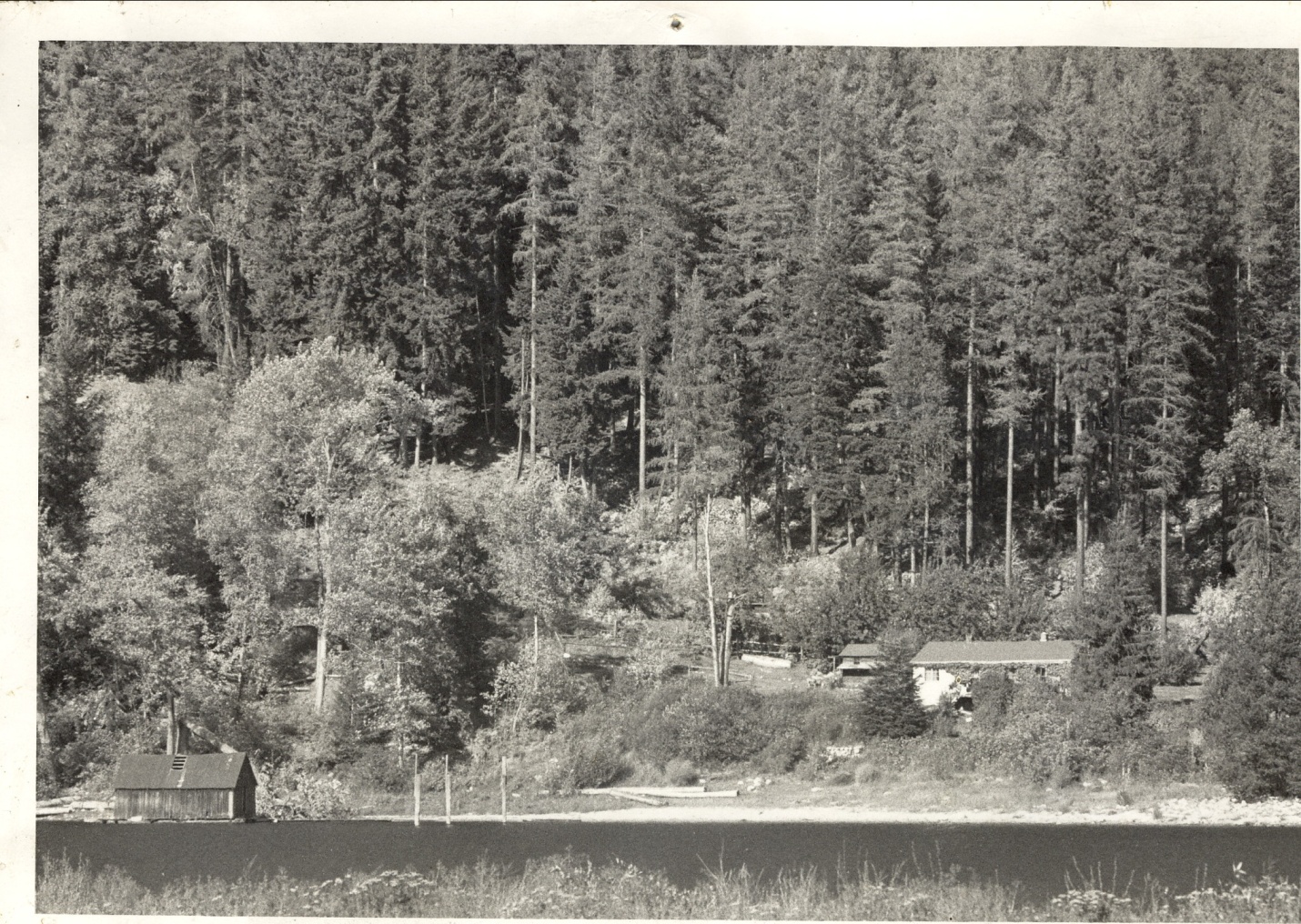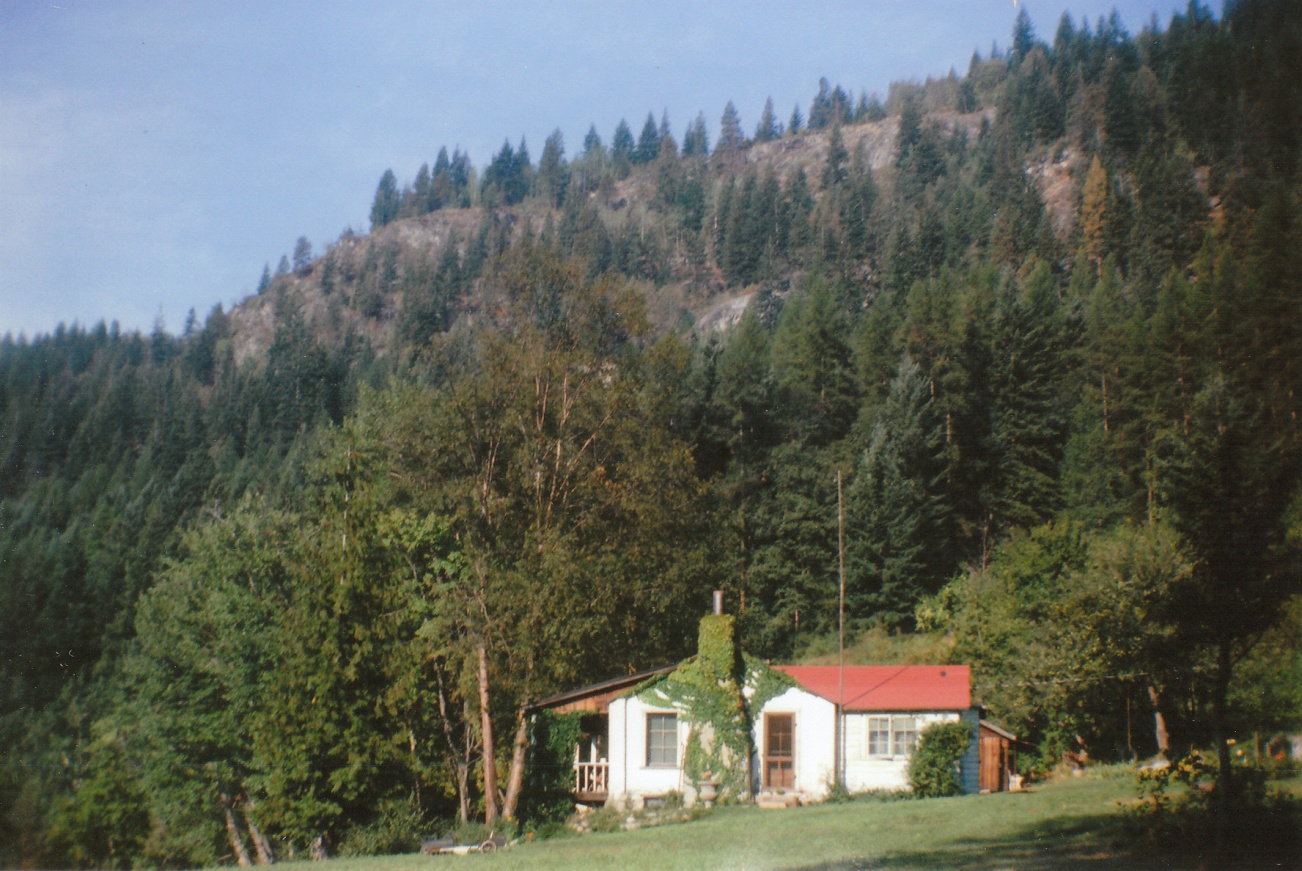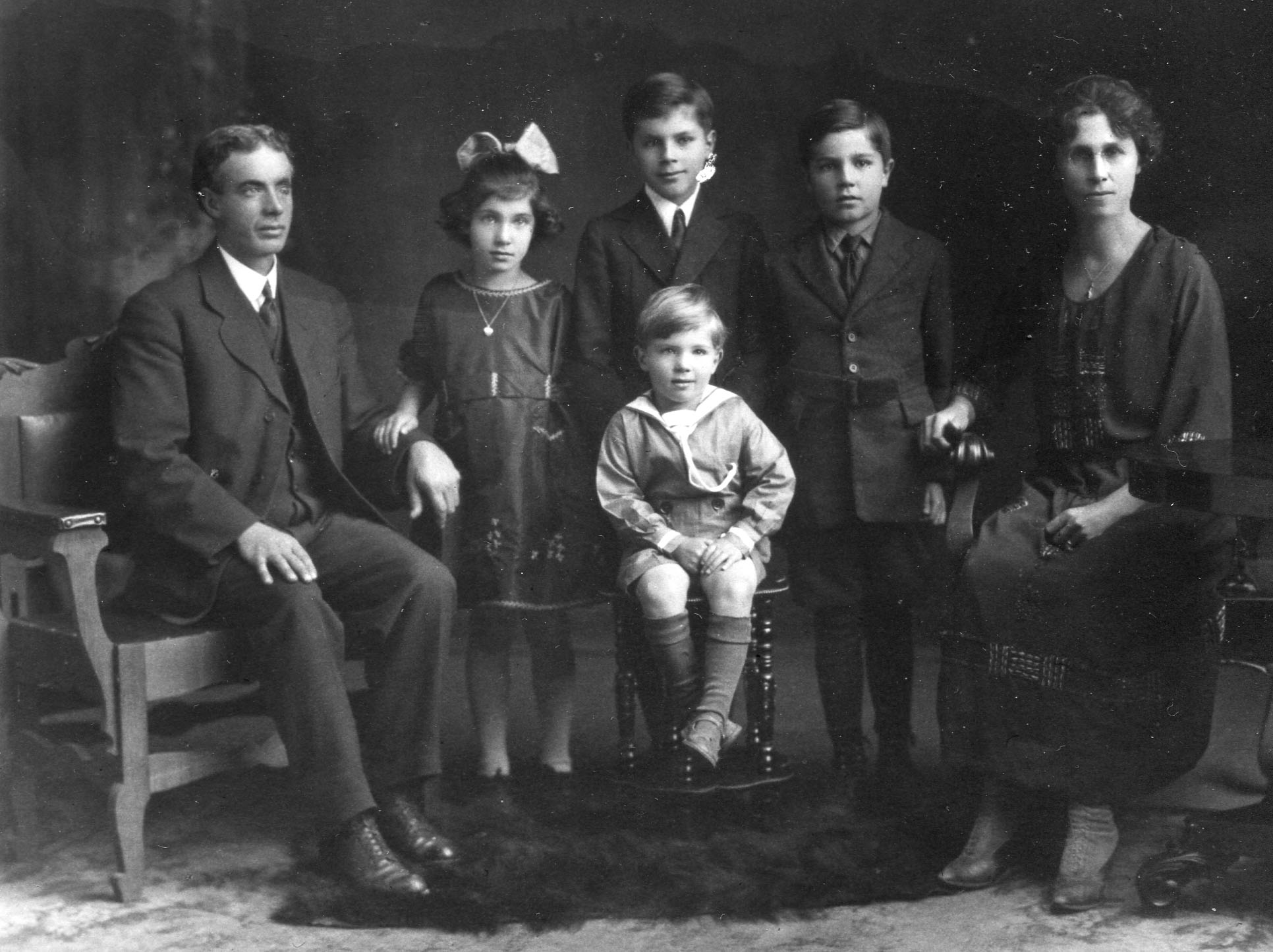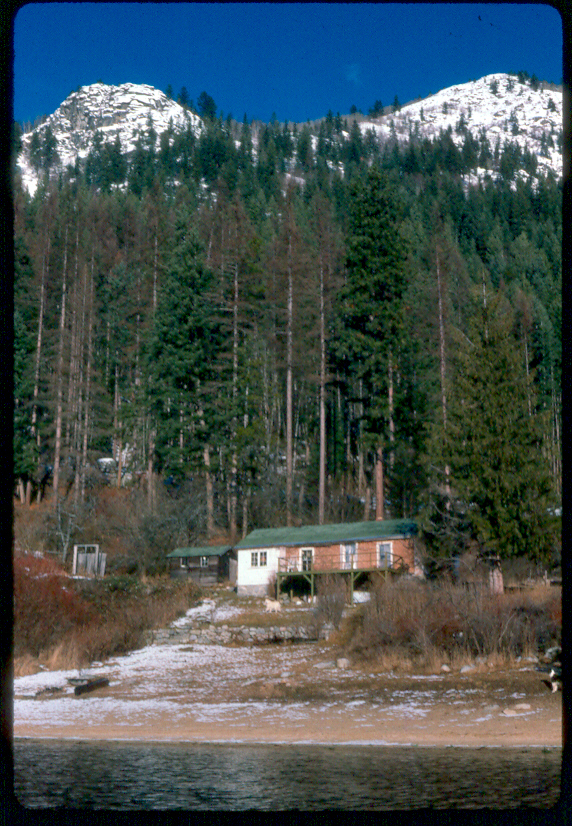BURNS POINT
THE RANCH
There was a time back before the wars when there was an effort to start fruit ranches on the hills around suitable spots on Kootenay Lake. Even before the Okanagan orchards began, Kootenay pioneers started to propagate fruit
The first white settlement on the North Shore across from Nelson began around 1890. Newlin Hoover owned all the property between the bluffs across from the mouth of Cottonwood Creek up to the James Johnstone Ranch. In 1903 he swapped five acres to J. Fred Hume so he could construct two lovely houses on it along with tennis courts and grape vines. Hume called this property Killarny on the Lake. Hoover lived in a brick powder house on what came to be called the Hoover Ranch then Burns Point.

In 1926, John Burns bought the ranch from Hoover or Captain McClian who may have owned the property ranch after Hoover.
The house had to be upgraded by adding two bedrooms, a bathroom and a porch. Access was by boat only. A road was far in the future. Grandpa Burns refurbished an old house on the Nelson side to park vehicles and store equipment. He maintained good boathouses on either side so crossing over was relatively easy. The family usually crossed over sometime in late April or early May as soon as things were thawed out. There were four kids now: Robert, J.W.(Jack), Jean Marie and James Edward (my father). They also had two dogs, a cow and chickens. Some of the crossings were not so easy.

Auntie Jean recalls trying to get Daisy the cow over on a barge. She refused so they had to herd her down from the ferry landing –e rough hike of two miles. Another time they were towing Mutt and Jeff (their two water spaniels over on a rough day when the towed rowboat flipped. Grandpa cut it loose and got the kids to shore. When he went back for the dogs the kids were wailing thinking they had drowned. There was a pocket of air in the over turned boat and the dogs were fine.

There was lots of fruit on the ranch – apples, plums, peaches several types of cherries, strawberries, currants and gooseberries. Grandma had a good flower garden and a vegetable garden. Fishing was very good before the dams, especially Corrra Lin. The boys set out night lines when they wanted a nice trout or two. Grandpa taught the kids to swim and was a stickler for water safety, Swimmers and boaters had to be aware of currants which were stronger then and the water was full of driftwood from sometime in early June to July. One time dad lost a good boat because he failed to pull it up high enough. The water came up and took it ‘down the rapids”. The rapids began less than a mile downstream near the mouth of Grohman Creek.

The 45 acre property extended up the mountain almost to Pulpit Rock so there was lots of hiking and exploring the woods and shores. The kids often hiked up to the reservoir(the spring that supplied water) and Pulpit Rock or sometimes over to Grohman or to the top of Elephant Mountain. An old timer called Coal Oil Johnny had a cabin by the reservoir. He sold coal oil in Nelson and worked a claim between the reservoir and Pulpit Rock where he had sunk a couple of shafts in the granitic bedrock. He never found anything, he bought the coal oil wholesale
When he died, Uncle Jack inherited the cabin. He and some pals went up there to smoke and unfortunately burned the place down
As the kids got older, they started to go their own way . Grandpa retired in 1929 and he and Gram spent more time in Ainsworth. The kids went to school in the states. Bob to Santa Clara then Colorado School of Mines, Jack to Mines, Jean to nursing school in Denver and Ted to Santa Clara. Bob was killed while prospecting on Lake Athabasca in 1933. He and two school mates cut across an open stretch of water in a canoe and were caught by a storm . Jack lived in Kimberley then Ainsworth, Jean married a newspaper man named Dinty Moore and spent most of the rest of her days in Sacramento, CA. Ted moved between Nelson, Ainsworth and California but ended up living at the ranch until his death in 1990
The ranch is no more. People live there including my sister Sue but there are only a few neglected apple trees and houses cover much of the orchard. Grandpa slowly started to let a few lots go in 1943 when Danny and Dee McKay bought a lot with Bob’s old cabin on it which they fixed up and lived in for the summers. More lots were sold but none from the ranch proper. That didn’t happen until the 1980’s. In a decade or so, all the lots were gone and the North Shore was just about unrecognizable. A bridge replaced the old Nelson Ferry in 1967 and a road was punched all the way down to the ranch in 1959. There was even talk of punching it though to Grohman because people were starting to live over there. If the job was easy, the road would likely be there now but there is lots of steep rock in the way.
When the bridge engineers were narrowing down locations, they looked at a crossing from about the lower end of Kootenay Street to Burns Point but the foundation materials were not suitable. We dodged a bullet there. The urbanization of the shore continues. People are not happy with the old summer camp environment any more. They want a big palace, lots of paved access and all the electronic toys. They live there year round and trash the peace of mind with roaring power boats, jet boats and the like. Many people are degrading the shores by trying to create the idealized beach. Building bulkheads and groynes paving backshores and nuking anything green that dares to grow where they wish the land to be manicured or bare. It seems like it could be worse because Johnstone Road has now become a favored real estate address and old seasonal cabins (if there are any left) will likely soon be replaced by New Age Taj Mahals
Tags: country life